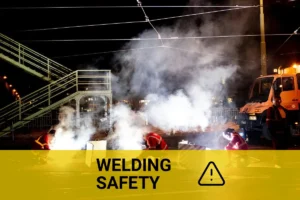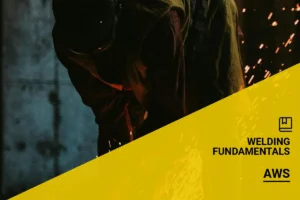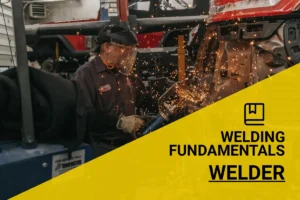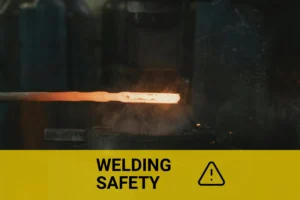How to Heliarc Weld? Essential Steps, Tips, and Tools
Published on: June 24, 2025 | Last modified: March 4, 2025
By: Joe Carter
Heliarc is a welding process that uses an arc between a non-consumable tungsten electrode and the workpiece. This method produces a high-quality weld with less spatter.
People are frequently curious about how to heliarc weld. It’s vital to get this right, as improper techniques can lead to weak joints and safety hazards. I’ve worked with heliarc welding for years and have seen first-hand how attention to detail can really make a difference in your welding guidance.
In this guide, you’ll learn about what is heliarc welding, the types of heliarc and their weldability, the tools you’ll need, steps for heliarc welding, necessary precautions, techniques employed, factors affecting the process, common issues, and advanced tips. Plus, we’ll discuss the benefits and typical applications of this effective welding method.
Contents
- How to Heliarc Weld?
- What is Heliarc?
- Types Of Heliarc and Their Weldability
- Things You’ll Need for Heliarc Welding
- Steps for Heliarc Welding
- Precautions
- Types Of Heliarc Welding Techniques
- Factors Affecting Heliarc Welding
- Understanding Heliarc Welding Variables
- Common Issues You Might Encounter
- Aftercare, Inspection, and Advanced Tips for Heliarc Welding
- Top Benefits Of Heliarc Welding
- Typical Applications Of Heliarc Welding
- Are There Any Alternatives to Heliarc Welding?
- Frequently Asked Questions (FAQs)
- Conclusion
- References
How to Heliarc Weld?
Heliarc welding, a type of TIG welding, uses helium or argon gas. To heliarc weld, set your welder to 75-100Amps, maintain a 1/8 inch (3.2 Mm) arc, and practice on aluminum or steel. It’s tricky but great for precise applications.
What is Heliarc?
Heliarc, or TIG (Tungsten Inert Gas) welding, is a precise electric arc welding process. It uses a non-consumable tungsten electrode to produce the weld. The heat comes from the arc formed between the electrode and the base material. This method typically operates at 10 to 300 A (Amperes), making it ideal for thin materials.
When you learn how to heliarc weld, you’ll find it emphasizes control and finesse. The shielded gas, usually argon or helium, protects the weld area from contamination. I remember my first time—getting a steady arc took practice, but it felt rewarding!
Friends have shared how it worked for various projects, like repairing classic cars. They used heliarc welding to connect aluminum parts with ease. It’s fascinating how atomic hydrogen welding—different but similar—can serve similar purposes, but I find that heliarc shines for its versatility and cleaner welds.
Types Of Heliarc and Their Weldability
Aluminum Alloys
Aluminum alloys are lightweight and corrosion-resistant. To weld aluminum, set your heliarc welder to AC (Alternating Current) with a short arc. Use a 4047 or 5356 filler rod for best results.
Stainless Steel
Stainless steel is strong and rust-resistant. To weld it, use DC (Direct Current) in a clean work area. A 308L filler rod works well for most projects.
Magnesium Alloys
Magnesium alloys are strong and lightweight but tricky to weld. Use a DC arc and a filler rod like AWS ER AZ61A for a successful joint.
Carbon Steel
Carbon steel is common in various applications due to its strength. To weld it, use DC positive polarity for a clean weld, with a 70S-6 filler wire for structural integrity.
Nickel Alloys
Nickel alloys are strong and resistant to heat and corrosion. To weld them, maintain a consistent arc using a filler that matches the base material, like Inconel.
We’ve wrapped up the various types of heliarc and their weldability here. Let us turn our attention to the essentials for heliarc welding.

Things You’ll Need for Heliarc Welding
What do you need before starting?
- Heliarc Welder: You need a reliable heliarc welder, like the Miller Syncrowave 210. It’s vital for precise welds using either AC or DC current.
- Electrodes: Get 1/16 in (1.6 Mm) diameter tungsten electrodes, such as the E3 series. They ensure accurate arc stability, crucial for quality welding.
- Gas Supply: You need Argon gas tanks, typically 125 cubic feet (3.5 M³), to shield the weld pool from contaminants. It’s essential for clear, strong welds.
- Cooling System: Consider a water-cooled torch like the CK Worldwide 17 Series. It prevents overheating and extends your welder’s lifespan.
We’ve wrapped up the necessary materials for Heliarc welding here. Let us turn our attention to the steps involved.
Steps for Heliarc Welding
Here are the steps to operate a heliarc welder effectively. Follow them for successful welding!
Prepare Your Workspace
Choose a clean, dry workspace with good ventilation—aim for 2 to 3 air changes per hour. Keep flammable materials at least 3 meters (10 Feet) from your welding site. Implementing effective techniques to prevent inhaling welding fumes is crucial for maintaining safety and health. A tidy area reduces distractions and improves focus.
Gather Necessary Equipment
Set up your heliarc welder, which typically requires a 220-volt (V) power supply for optimal performance. Ensure you have filler material compatible with your base metal, usually aluminum for heliarc welding. Using the right materials is vital for strong joints. When selecting the kind of welder you need, consider both your project requirements and material compatibility.
Set Up the Welder
Connect the power supply to your heliarc welder and check the settings. Aim for a current range of 50 to 200 amperes (A), depending on the metal thickness. Use a tungsten electrode tip with a diameter of 1.0 to 3.2 mm (0.040 To 0.125 In) for accurate application. Adjust your welder based on the type and thickness of the material.
Clean the Workpieces
Clean the base metals with a wire brush or grinder. Remove rust or paint from steel and degrease aluminum for optimal bonding. Grind away contaminants at least 10 mm (0.394 In) from the edge of the workpiece. Neglecting this step can lead to poor weld quality.
Begin the Welding Process
Position the tungsten tip about 3 mm (0.118 In) from the material. Start with a quick arc strike, keeping a steady hand to maintain a puddle size of approximately 10 mm (0.394 In). Move the welder smoothly, adjusting your speed to prevent the pool from spreading too much. A consistent speed is crucial for clean welds—speed up around corners. To enhance your welding projects, mastering the technique for making a spot welder can be incredibly beneficial.
We’ve wrapped up the steps for Heliarc welding here. Let us turn our attention to precautions to consider.
Precautions
Let’s quickly cover safety measures for heliarc welding.
- Eye Protection: Wear a properly rated welding helmet to shield your eyes from harmful rays; I recommend shade 10 or higher.
- Ventilation: Ensure the workspace is well-ventilated to minimize harmful fumes; use fans or open windows for airflow.
- Protective Gear: Use heavy-duty gloves and a fire-resistant apron to protect your skin from sparks; look for options with ASTM ratings.
- Fire Safety: Keep a Class ABC fire extinguisher nearby; it’s crucial to be prepared for sparks that can ignite materials.
Always prioritize safety precautions—your well-being is essential for effective welding.
We have now covered necessary precautions for Heliarc welding. The next section will discuss the various techniques used in Heliarc welding.
Types Of Heliarc Welding Techniques
Let’s explore the different types of heliarc welding: DCEP, DCEN, AC, Tungsten Inert Gas (TIG) welding, and contaminant-free welding.
Direct Current Electrode Positive (DCEP)
DCEP offers better penetration and is ideal for thin materials. In this method, the current flows from the electrode to the workpiece, typically operating at 100-250 amps for most projects.
Direct Current Electrode Negative (DCEN)
DCEN provides a smoother arc, making it perfect for thicker materials. This method directs arc current to the electrode, generating more heat at the tip. It usually runs between 100-150 amps, ensuring strong welds.
Alternating Current (AC)
AC is excellent for welding aluminum and magnesium. The current alternates between positive and negative, cleaning the weld pool and promoting even melting of both materials. It’s often set between 150-200 amps for effective results.
Tungsten Inert Gas (TIG) Welding
TIG welding uses a non-consumable tungsten electrode. It offers high precision and clean welds on nearly all metals, especially in specialized applications where tight tolerances are crucial. For most applications, maintain the current between 1-2 amps per millimeter of material thickness.
Contaminant-free Welding
This method ensures a contamination-free environment during welding. Contaminants can compromise weld quality and lead to failures. Maintaining a clean, shielded area is crucial for successful contaminant-free welding.
Factors Affecting Heliarc Welding
What factors can impact your success with heliarc welding?
Material Thickness
Material thickness directly influences the heat needed. For instance, welding materials over 3 mm (0.12 In) typically requires more power, resulting in deeper penetration.
Shielding Gas Composition
The right shielding gas mix is vital, often Argon or a blend. Pure Argon creates a smoother arc, with flow rates around 15-25 L/min (0.5-0.9 Cu Ft/min).
Welding Current Settings
The current setting is crucial. Adjusting from 70-250 Amps ensures you get the correct heat for various metals, especially aluminum versus steel.
Travel Speed
Your welding speed matters too. A faster speed can lead to weak joints; optimally, 1-4 inches (2.54-10.16 Cm) per minute yields a strong bond.
Electrode Preparation
Preparing your electrode makes a significant difference. Cleaning it to remove oxidation ensures a stable arc, with recommended angles between 10-15 degrees.
Understanding Heliarc Welding Variables
Let’s dive into key variables that affect the outcome of your heliarc welding.
Weld Bead Characteristics
When you weld, bead characteristics matter. You should look out for:
| Characteristic | Ideal Measurement | Significance |
|---|---|---|
| Bead Width | 3 mm to 8 mm (0.12 to 0.31 in) | Correct width ensures coverage without excess. |
| Bead Height | 1 mm to 3 mm (0.04 to 0.12 in) | Height impacts strength and appearance of the weld. |
| Penetration Depth | Up to half the thickness of the base material | Deep penetration strengthens the weld joint. |
Heat Input Calculations
Understanding heat input is crucial. It determines quality:
- Formula: Heat Input (kJ/mm) = (Voltage x Current) / Travel Speed
- Ideal Range: 1 to 2.5 kJ/mm often yields the best results.
- Impact: Higher heat can cause distortion; lower may lead to weak bonds.
Gas Flow Rate Influence
The right gas flow rate is essential. Check these details:
- Optimal Flow Rate: 15-25 CFH (Cubic Feet Per Hour) for argon.
- Effects of Low Flow: Increased contamination risk; arcs become unstable.
- Effects of High Flow: Creates turbulence; may blow molten metal away.
Mastering these variables can enhance your welding skills significantly!
Common Issues You Might Encounter
Now let’s look at specific issues with the heliarc process…
Inconsistent Arc Stability
Heliarc can show erratic arc behavior. Check your gas flow; aim for about 15-20 CFH (Cubic Feet Per Hour). Adjust your amperage; high or low can disrupt stability.
Contamination Of the Weld Pool
Heliarc welds are sensitive to impurities. It’s crucial to clean the base material using a wire brush or solvent. It makes a significant difference!
Electrode Wear and Tear
The heliarc electrode wears down over time. Inspect the tip regularly and replace it if it becomes pitted or rounded. Aim for a point of about 0.041 in (1 Mm).
Weld Cracking
Heliarc welds may crack due to rapid cooling. Monitor heat input—ideal temperatures are between 350°F (177°C) and 1,500°F (815°C). Preheat metals when necessary!
Insufficient Penetration
Heliarc might not penetrate well if settings are off. Adjust voltage to a suitable range—typically around 16 to 18 volts. A proper electrode angle often helps too!
Aftercare, Inspection, and Advanced Tips for Heliarc Welding
Here’s important guidance on aftercare, inspection, and advanced tips for heliarc welding.
Aftercare Tips
After completing the weld, clean your torch and nozzle within 30 minutes. Use a specific nozzle cleaning tool like the #773 to effectively remove contamination. Inspect the gas lens as well, ensuring it’s free of spatter and dirt for optimal performance.
Inspection Essentials
Inspect the weld bead’s width and appearance immediately. It should be between 3 mm (0.12 In) and 5 mm (0.20 In) with consistent, smooth edges. Consider techniques for determining weld size when assessing your work. Use a caliper for precise measurement; I recommend the Adafruit Digital Caliper for accuracy.
Expert Tips
Maintain a 15-degree push angle for optimal penetration. Use 2.4 mm (0.094 In) tungsten for thicker materials to stabilize the arc. Pay attention to your travel speed, aiming for 15-25 cm/min (6-10 In/min) depending on material thickness to achieve the best bead profile.
Top Benefits Of Heliarc Welding
The main benefit of heliarc welding, or tungsten inert gas (TIG) welding, is its ability to produce clean and precise welds. Friends have told me how it worked wonders on their delicate projects, giving them a professional finish.
Additionally, you can expect several secondary advantages. It’s excellent for welding thin materials, offers high-quality control, allows for versatility with different metals, and provides less heat distortion compared to other methods. However, understanding some potential drawbacks of arc welding is crucial to make an informed choice.
Typical Applications Of Heliarc Welding
I’ve seen people use heliarc welding for various projects. Its main applications include:
- Aerospace Components: Heliarc welding joins aluminum parts in aircraft and rockets. Its strength and lightweight nature make it popular in this field.
- Medical Equipment: It’s used for welding titanium in surgical instruments. This method ensures precision, sterility, and durability.
- Nozzles for Spacecraft: This technique creates strong joints in rocket nozzles, where high heat tolerance is crucial for safety.
- Automotive Racing: Heliarc welding bonds exhaust systems and custom frames. Its lightweight design balances performance and safety.
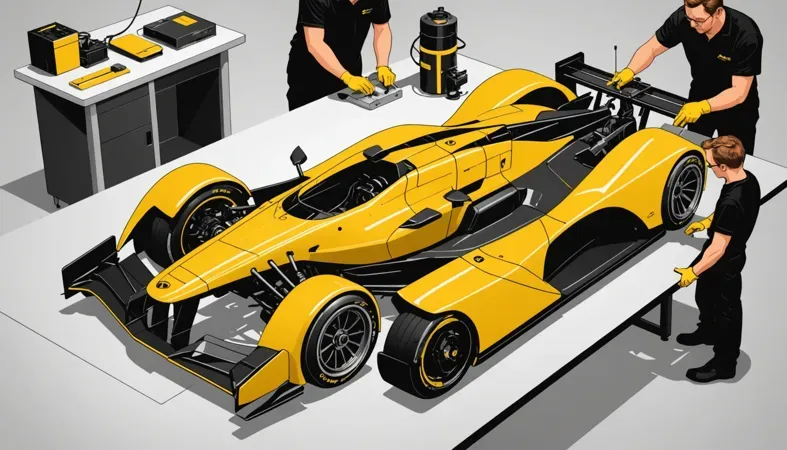
Ensure clean joints for optimal heliarc welding results.
Are There Any Alternatives to Heliarc Welding?
Yes, there are several alternatives to achieve similar results. MIG welding, for instance, is popular for its speed and ease of use. Product names like the Miller Multimatic series can handle a variety of materials, making them great for beginners and pros alike.
Another option is TIG welding, which offers precision, especially for thinner materials. If you’re looking for options, check out brands like Lincoln Electric’s TIG units. Each method has its own strengths, so consider your project requirements when choosing.
Frequently Asked Questions (FAQs)
Now let us look at some common queries I typically get asked about heliarc welding.
Is Heliarc Welding the Same As TIG?
No, heliarc welding is not the same as TIG welding. While both processes use a tungsten electrode and an inert gas, heliarc welding specifically uses helium as the shielding gas. Helium provides a hotter arc, making it beneficial for welding thicker materials at a faster rate, often improving productivity.
What is Heliarc Welding Used for?
Heliarc welding is commonly used for welding non-ferrous metals like aluminum and magnesium. It’s the preferred technique due to its precision and clean welds. Industries such as aerospace and automotive often use heliarc welding because it delivers strong, high-quality joints, which are crucial for safety and performance.
How Does Heliarc Welding Work?
Heliarc welding works by creating an electric arc between a non-consumable tungsten electrode and the base material. This arc melts the metal, and an inert gas like helium shields the weld area from contamination. The process allows for controlled heat, making it ideal for thin materials, offering various welding techniques suited for different applications.
For technical insights, how a welding machine operates is crucial to understanding these processes.
What is the Trick to Welding Aluminum?
The trick to welding aluminum is to properly clean the surface before starting. Oxidation can form a barrier that prevents proper fusion. Utilizing an appropriate techniques to weld aluminum, such as using a stainless-steel brush or chemical cleaner, can remove this oxidation, ensuring a stronger and cleaner weld.
What is Atomic Hydrogen Welding?
Atomic hydrogen welding is a process that uses hydrogen as a shielding gas, heating the workpiece by an electric arc. It’s different from heliarc because it leads to a broader heat-affected zone. While less common today, it still finds applications in specific metalworking industries due to its unique properties.
Conclusion
That brings us to the end of our journey on how to heliarc weld. We covered what a heliarc welder is, types of heliarc and their weldability, necessary items for heliarc welding, steps to follow, precautions, techniques, factors affecting welding, common issues, aftercare, inspection tips, benefits, typical applications, and alternatives to heliarc welding. Each of these topics is critical for you to master this welding technique.
To sum it up, learning how to heliarc weld involves understanding the equipment, procedure, and safety measures. It’s not just about basics like voltage settings and electrode angles; it’s also about mastering specific techniques and solving common problems. Remember, the right setup, like using pure gas and knowing your materials, significantly impacts your success in heliarc welding.
For further insights and resources on the art of welding, we invite you to explore our homepage: What is Welding.
References
- American Welding Society. (2020). AWS Welding Handbook: Welding Science and Technology (Vol. 1). Miami, FL: AWS.
- Richardson, R. (2010). MIG Welding Guide. Cambridge, UK: Woodhead Publishing.
- Jeffus, L. (2020). Welding: Principles and Applications (9th ed.). Boston, MA: Cengage Learning.
Joe Carter is a retired welding professional with over 40 years of hands-on experience in the industry, spanning ship repair, structural welding, and even underwater projects. Joe is a master of MIG, TIG, and Stick welding. Passionate about mentoring the next generation of welders, Joe now shares his decades of expertise and practical insights to help others build rewarding careers in welding.
American Welding Society, Heliarc Welding, MIG Welding, Structural Integrity, TIG Welding, Tungsten Electrode, Welding, Welding Safety, Welding Techniques, Welding Tips

